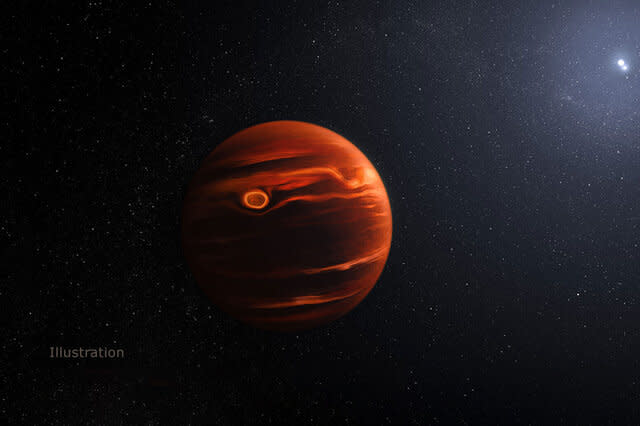NASA’s JWST returns an alien weather report from a distant world
If you go outside, look up at the night sky, and see a cloud from another world, you might be in for one of the worst or best nights of your life. For the characters in Jordan Peele’s 2022 science fiction horror film Nope, the appearance of an alien cloud was a nearly surefire ticket to a horrifying death. Much like the ordinary clouds we’re used to, the creature which came to be known as Jean Jacket appeared to change shape before our very eyes. It could look like a flying cowboy hat one minute and a predatory jellyfish the next. And it didn’t like to be looked at, which we honestly get.
For an international team of astronomers, catching a glimpse of alien clouds brought the same level of extraterrestrial terror without the imminent (if entertaining) demise. As a part of the JWST’s Early Release Science program, astronomers pointed the telescope at an exoplanet 40 light years from Earth. With only a few hours of data, they captured detailed information about its atmosphere, including the presence of blistering clouds of hot sand, according to a paper published in The Astrophysical Journal Letters.
RELATED: The 12 scariest horror movies streaming on Peacock, from 'Sick' to 'Nope'
The planet, known as VHS 1256 b, orbits a binary star system at a distance roughly four times that of the Sun to Pluto. Its incredible distance and binary orbital setup means that a day lasts roughly 22 hours, but a year lasts 10 millennia. Those qualities make VHS 1256 b interesting, but they also make it a little easier to study.
“VHS 1256 b is about four times farther from its stars than Pluto is from the Sun, which makes it a great target for Webb. That means the planet’s light is not mixed with light from its stars,” said Brittany Miles, lead author of the paper, in a statement.

This illustration shows the swirling clouds identified by the James Webb Space Telescope in the atmosphere of exoplanet VHS 1256 b. The planet is about 40 light-years away and orbits two stars. The planet’s clouds, which are filled with silicate dust, are constantly rising, mixing, and moving. Photo: NASA, ESA, CSA, Joseph Olmsted
Just because VHS 1256 b is far away from its stars, that doesn’t mean it’s a frozen world. Quite the opposite. That’s because VHS 1256 b is a brown dwarf, a class of planet which exists somewhere between a gas giant and a small star. Its mass is estimated at approximately 19 times that of Jupiter, give or take. That’s not enough mass to sustain stable fusion in the core, like a star, but it is enough to fuse heavier versions of hydrogen like deuterium for a limited time. And it’s enough mass to get hot. Surface temperatures on VHS 1256 b clock in at about 1,500 degrees Fahrenheit (830 degrees Celsius).
All of that heat generates infrared light which can be detected by the JWST’s Near Infrared Spectrograph, and scientists can learn a surprising amount from non-visible light. You know intuitively that the color of light coming off an object tells you something about it. Most of the time, it just tells you the color — this shirt is red, this one is black — but a red flame communicates that something is hot, and a blue flame tells you it’s hotter. That, in turn, can tell you something about the fuel that’s being burned. That’s sort of how spectroscopy works. Scientists can point a spectrometer at something, look at the frequencies of light coming off it (peaks in the spectrum) and figure out what that thing is made of.

 Yahoo Autos
Yahoo Autos 